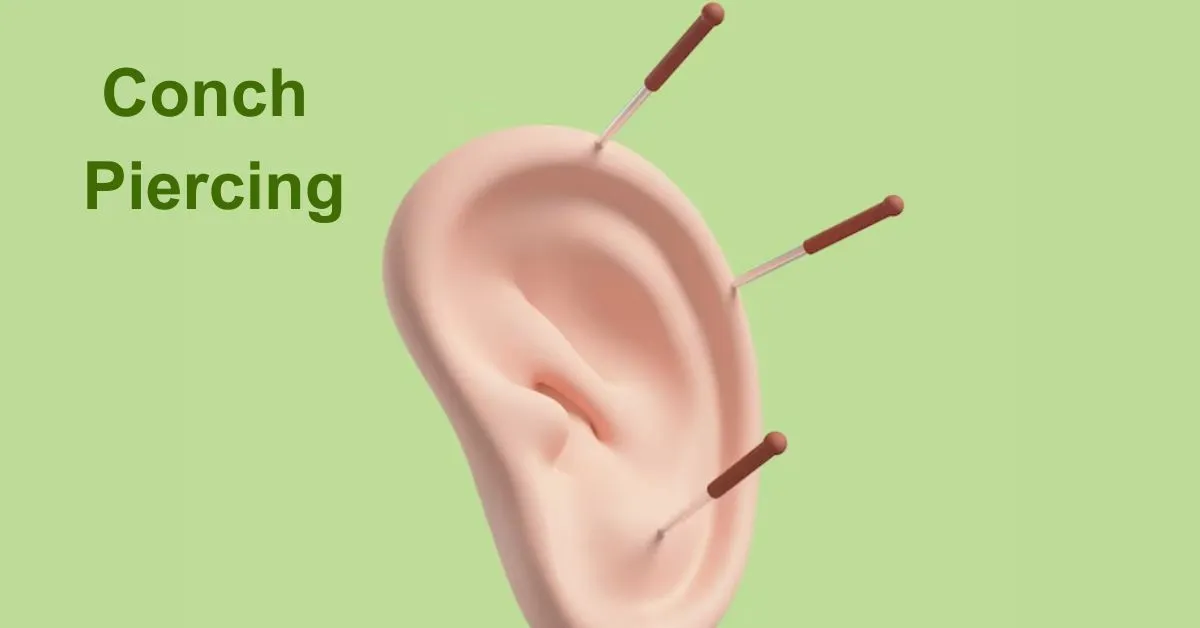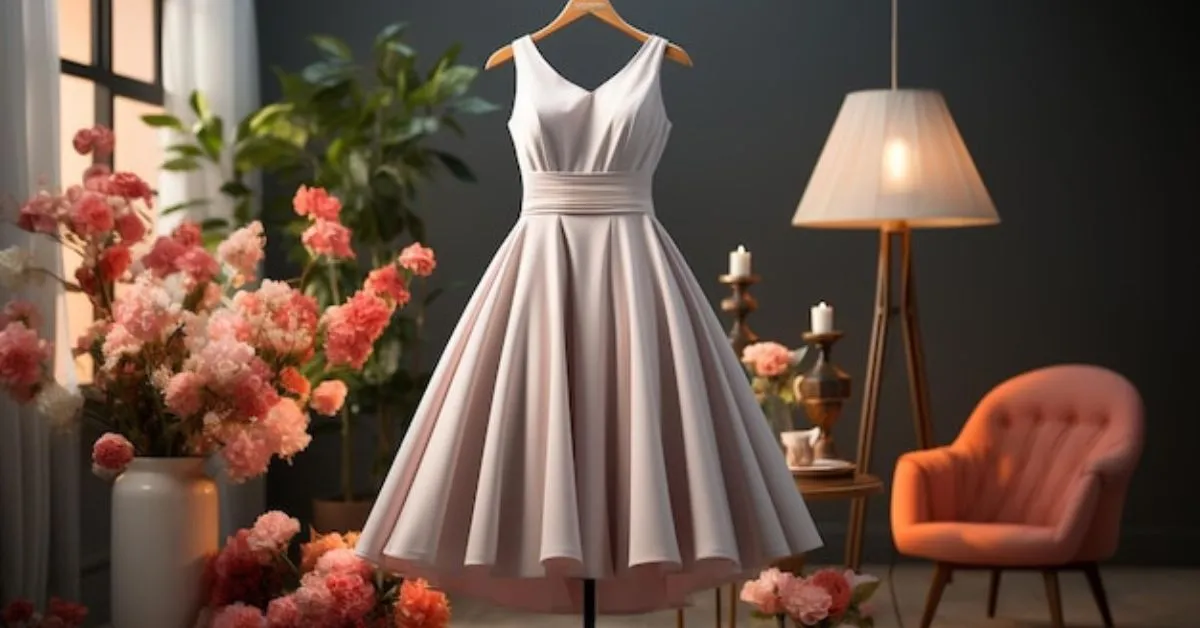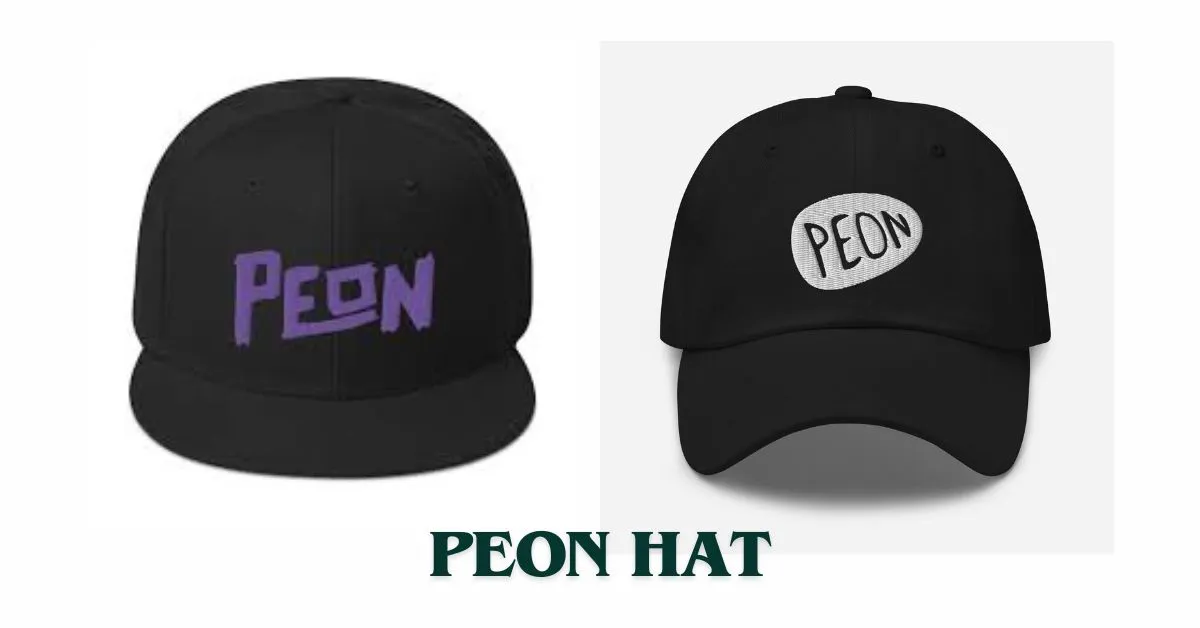Fashion
Conch Piercing: Navigating the Art, Pain, and Healing Journey

Body piercing has evolved into a popular form of self-expression and body modification, with enthusiasts exploring various placements and styles. One such unique piercing is the conch piercing, a procedure that involves piercing the inner cup of the ear, either in the inner or outer conch. In this article, we will delve into the intricacies of the conch piercing, exploring the procedure, the associated pain, potential pain relief methods, jewelry options, and the healing process.
Conch Piercing Procedure:
The conch piercing procedure is a meticulous process that requires expertise and precision. Piercers typically employ two methods: a piercing needle or a dermal punch. The choice between these methods depends on factors such as individual anatomy and piercer preference. Before starting the procedure, the piercer ensures a sterile environment to prevent infection.
The steps involved in a conch piercing procedure are as follows:
- Cleaning: The first step involves thorough cleaning of the ear to eliminate any bacteria or contaminants. This crucial step reduces the risk of infection during and after the piercing process.
- Marking: Once the ear is clean, the piercer marks the exact location for the piercing. Precision is key to achieving the desired aesthetic and avoiding complications.
- Piercing: The piercer then uses a piercing needle or dermal punch to create the hole in the thick cartilage of the conch. The choice between a needle and dermal punch depends on factors like personal preference, anatomy, and the piercer’s expertise.
- Inserting Jewelry: After creating the hole, the piercer inserts the chosen jewelry into the newly pierced conch. The choice of jewelry, whether it be bar jewelry, studs, or hoops, depends on individual preferences and the piercer’s recommendations.
- Applying Pressure: Pressure is applied to the pierced area to control bleeding. This step is essential for minimizing blood loss and ensuring a clean and well-healed piercing.
- Cleaning Again: The final step involves cleaning the pierced area once more. This helps remove any remaining blood or debris and reduces the risk of infection.
Pain and Conch Piercings:
Pain perception is highly subjective, varying from person to person. Conch piercings are often considered more painful than other piercings due to the thicker and harder cartilage in the conch. Pain is experienced during the procedure, immediately after, and throughout the healing process, which can last for a significant duration.
Some individuals report experiencing pain for an extended period, ranging from weeks to months, and in some cases, even a year or more. It is crucial to manage and monitor pain during the healing process, as heightened or prolonged pain may indicate potential issues such as infection.
If the pain intensifies or becomes concerning during the healing period, seeking guidance from a professional piercer or healthcare provider is imperative. Prompt attention to increased pain levels can help identify and address potential complications, ensuring a smoother healing process.
Pain Relief Methods and Acupuncture:
Interestingly, some individuals explore conch piercings as a means of pain relief, drawing inspiration from acupuncture and acupressure. Acupuncture, a traditional Chinese medicine practice, involves stimulating specific points on the body to promote healing and alleviate pain. In the context of conch piercings, some believe that stimulating certain points on the ears might provide relief.
However, it is essential to note that there is limited scientific research supporting these claims. A 2017 review suggested that auricular acupuncture, which targets points on the ear, may offer some pain relief when administered within 48 hours of pain onset. Still, more comprehensive research is needed to validate these findings and explore the potential application in the context of conch piercings.
Another method mentioned is battle acupuncture, which targets five different points in each ear. While this practice may offer pain relief for some individuals, it’s crucial to clarify that these points are not near the conch, the location of the piercing. As with any alternative pain relief method, individuals considering these practices should consult with healthcare professionals and experienced piercers to ensure safety and efficacy.
Jewelry Options for Conch Piercings:
Choosing the right jewelry is crucial for the healing and comfort of a conch piercing. Various options are available, including bar jewelry, studs, and hoops. To minimize irritation and potential complications, it is recommended to opt for high-quality materials such as surgical stainless steel, titanium, solid 14- or 16-karat gold, or niobium.
A knowledgeable piercer can provide guidance on selecting the most suitable jewelry based on individual preferences, anatomy, and the healing process. It’s essential to prioritize materials that are hypoallergenic and less likely to cause adverse reactions during the healing period.
Healing Time and Cartilage:
The healing time for a conch piercing can vary based on individual factors and the type of cartilage involved. Cartilage, being thick avascular tissue, poses unique challenges in the healing process as it does not readily accept puncture wounds.
The healing process generally spans weeks to months, with individuals experiencing varying levels of discomfort and sensitivity during this period. Adequate aftercare, including regular cleaning and avoiding trauma to the piercing, is essential for promoting proper healing and minimizing complications.
Conclusion:
Conch piercings are a fascinating blend of artistry, individual expression, and the intricate process of healing. The pain associated with conch piercings is subjective but often more pronounced due to the dense cartilage in the conch. Pain management, alternative relief methods, and careful jewelry selection are crucial aspects of ensuring a successful and comfortable healing process.
As with any body modification, it is essential to approach conch piercings with a well-informed mindset. Seeking guidance from experienced piercers, adhering to proper aftercare practices, and promptly addressing any concerns or complications can contribute to a positive piercing experience and a beautifully adorned conch.
Fashion
Azul Rey: The Royal Blue Hue that Captivates the World

Azul Rey, also known as royal blue, is a color that exudes elegance, sophistication, and a timeless appeal. This deep, vibrant hue has captured the hearts of artists, designers, and fashion enthusiasts alike. But what exactly is Azul Rey, and why does it hold such a significant place in various domains? Let’s delve into the fascinating world of this royal blue hue.
The Origin of Azul Rey
Historical Background
Azul Rey’s roots can be traced back to ancient civilizations. It was often associated with royalty and nobility, symbolizing power, prestige, and luxury. The color was initially derived from lapis lazuli, a semi-precious stone that was highly prized in ancient Egypt and Mesopotamia. The rarity and cost of lapis lazuli made Azul Rey a color reserved for the elite.
Cultural Significance
Throughout history, Azul Rey has held cultural significance in various societies. In medieval Europe, it was used in the garments of kings and queens, reinforcing its association with royalty. In religious contexts, it has been used in iconography and stained glass windows, representing divinity and celestial realms.
The Science Behind Azul Rey
Color Theory
Azul Rey sits between blue and violet on the color spectrum, making it a rich, deep shade of blue. Its creation involves a mix of primary blue with a hint of purple, resulting in its unique, regal appearance.
Psychological Impact
Psychologically, Azul Rey is known to evoke feelings of calmness, confidence, and stability. It is a color that can stimulate the mind, encouraging creativity and productivity while also providing a sense of security and trust.
Azul Rey in Fashion
Popularity in Fashion
Azul Rey has been a favorite in the fashion industry for decades. Its versatility allows it to be used in both casual and formal wear. From evening gowns to everyday attire, this color adds a touch of elegance and sophistication to any outfit.
Iconic Fashion Moments
Many fashion icons have donned Azul Rey, making memorable appearances on red carpets and runways. From the classic blue dresses worn by royalty to the stunning blue suits in modern fashion shows, Azul Rey continues to make a bold statement.
Azul Rey in Interior Design
How to Incorporate Azul Rey
In interior design, Azul Rey can be used to create a sense of depth and luxury in any space. Whether it’s a feature wall, furniture, or accessories, this color adds a dramatic flair that can transform a room.
Azul Rey Color Schemes
Azul Rey pairs well with a variety of colors. It works beautifully with neutral tones like white, beige, and gray, as well as with metallics like gold and silver. For a bolder look, it can be combined with contrasting colors like yellow or orange.
Azul Rey in Art
Famous Artworks Featuring Azul Rey
Artists throughout history have used Azul Rey to create striking pieces of art. From the deep blue backgrounds of Renaissance paintings to the abstract works of modern artists, this color has been a powerful tool in the artistic palette.
Techniques for Using Azul Rey in Art
Using Azul Rey in art involves understanding its properties and how it interacts with other colors. Techniques such as glazing and layering can enhance its depth and vibrancy, making it a focal point in any artwork.
Azul Rey in Branding and Marketing
Why Brands Choose Azul Rey
Brands often choose Azul Rey for its ability to convey trust, reliability, and quality. It is a color that stands out and is memorable, making it an excellent choice for logos and branding materials.
Case Studies of Successful Branding
Many successful brands have utilized Azul Rey in their branding. Companies like Ford, Samsung, and Pepsi have incorporated this color into their logos and advertising campaigns, reinforcing their brand identity and appealing to consumers.
Azul Rey in Nature
Natural Occurrences of Azul Rey
Azul Rey can be found in nature in various forms. From the vibrant blue of the sky to the deep blue of the ocean, this color is prevalent in the natural world, symbolizing vastness and infinity.
Symbolism in Nature
In nature, Azul Rey often symbolizes tranquility, depth, and the unknown. It evokes a sense of wonder and exploration, encouraging people to look beyond the surface and discover new depths.
Azul Rey in Technology
Azul Rey in Digital Design
In the realm of technology, Azul Rey is used in digital design for its modern and sleek appearance. It is commonly seen in website designs, app interfaces, and digital advertising, providing a professional and polished look.
Azul Rey in User Interface (UI) Design
Azul Rey is favored in UI design for its clarity and readability. It provides a strong contrast against lighter backgrounds, making it easy for users to navigate and interact with digital platforms.
Azul Rey in Events and Weddings
Azul Rey Themed Events
Azul Rey is a popular choice for themed events, adding a touch of elegance and sophistication. Whether it’s a corporate event or a gala, this color creates a memorable and striking atmosphere.
Wedding Trends
In weddings, Azul Rey is often chosen for its classic and timeless appeal. From bridesmaid dresses to table settings, this color adds a regal touch to the special day, making it unforgettable.
The Future of Azul Rey
Predicted Trends
As trends evolve, Azul Rey continues to hold its place in various industries. Its versatility and timeless appeal ensure that it will remain a popular choice for years to come.
Innovations in Azul Rey Usage
Innovations in dyeing techniques and materials mean that Azul Rey can be used in new and exciting ways. From sustainable fashion to cutting-edge design, the future of Azul Rey is bright.
How to Pair Azul Rey with Other Colors
Complementary Colors
Azul Rey pairs well with complementary colors such as orange and yellow, creating a vibrant and dynamic contrast. This combination can be used in fashion, design, and art to create eye-catching compositions.
Contrast and Harmony
For a harmonious look, Azul Rey can be paired with analogous colors like green and purple. This creates a cohesive and visually pleasing palette that is easy on the eyes.
DIY Projects with Azul Rey
Simple DIY Ideas
There are many simple DIY projects that can incorporate Azul Rey. From painting furniture to creating artwork, this color can add a personalized touch to any project.
Crafting with Azul Rey
Crafting with Azul Rey involves using various materials and techniques to create unique pieces. Whether it’s jewelry, home decor, or clothing, this color can be the star of any DIY project.
Maintaining and Caring for Azul Rey Items
Cleaning Tips
To maintain the vibrancy of Azul Rey items, it’s important to follow specific cleaning tips. Use gentle detergents and avoid harsh chemicals that can fade the color.
Long-Term Care
For long-term care, store Azul Rey items away from direct sunlight and moisture. This will help preserve their color and quality over time.
Conclusion
Azul Rey is more than just a color; it is a symbol of elegance, sophistication, and timeless appeal. From fashion to interior design, art to technology, this royal blue hue continues to captivate and inspire. Its versatility and psychological impact make it a valuable tool in various fields, ensuring its place in the future of design and creativity.
FAQs
What is the origin of Azul Rey?
Azul Rey originated from the use of lapis lazuli in ancient civilizations, symbolizing royalty and luxury.
How can I incorporate Azul Rey into my wardrobe?
You can incorporate Azul Rey into your wardrobe through clothing, accessories, and even makeup for a touch of elegance and sophistication.
What are some famous artworks featuring Azul Rey?
Famous artworks featuring Azul Rey include Renaissance paintings and modern abstract art, showcasing its versatility and impact.
Why is Azul Rey popular in branding?
Azul Rey is popular in branding because it conveys trust, reliability, and quality, making it memorable and appealing to consumers.
How do I maintain the vibrancy of Azul Rey items?
Maintain the vibrancy of Azul Rey items by using gentle detergents, avoiding harsh chemicals, and storing them away from direct sunlight and moisture.
Fashion
Revealing Versatility: A Comprehensive Exploration of the Everlasting Allure of Skirts

Key Takeaways
- Analysis of current trends in skirt fashion and sustainable practices.
- Guidance on selecting skirts that flatter different body types and suit various occasions.
- Understanding the significance of skirts in professional and casual settings.
- Data-driven insights into skirt market trends and consumer behaviors.
Modern Skirts and Fashion Trends
Today’s skirts are a sartorial playground for designers who combine textured fabrics, prints, and technologies to create garments that are at once innovative and steeped in history. Runway shows often feature skirts with digital prints or intricate pleating drawn from historic silhouettes, made possible by advances in textile production and design software. This contemporary reimagining of classic styles showcases skirts as adaptable fashion staples capable of transcending time and trend.
With an environmentally aware consumer base, the fashion industry’s focus has pivoted towards sustainability, with brands exploring organic cotton, recycled fabrics, and circular fashion concepts. Sustainable skirts for ladies are in style, drawing in customers who value ethical production and fabric sourcing. Driven by consumer demand and ecological imperatives, brands construct a more sustainable future by adapting to environmental requirements.
Incorporating technological innovations into the skirt-making process enhances design possibilities and promotes efficiency and precision. Laser cutting and 3D printing are revolutionizing pattern making and enabling customization to new levels, allowing skirts to be crafted according to individual specifications and body shapes. Technologies such as augmented reality fit-try apps also enhance the consumer experience, enabling shoppers to visualize how a skirt would look and fit before making a purchase, further cementing skirts’ place in the digital age.
Finding Your Perfect Skirt: Style and Fit Tips
Finding the perfect skirt involves understanding one’s body shape(pear, apple, hourglass, or otherwise) and selecting a skirt style that celebrates it. High-waisted skirts may accentuate the waist, while A-line skirts can balance broader shoulders. Finding the fitting skirt also accounts for personal taste, whether one gravitates towards bold patterns, subtle pastels, or classic denim. The choice of a skirt can be as individual as the wearer, allowing for a mode of self-expression that skirts have provided for centuries.
Transitioning from choosing to styling, the right accessories can transform a skirt’s narrative from understated to standout. A bright-colored belt or statement earrings can shift the visual focus and elevate the ensemble. Layering with a complementary cardigan or pairing with a tucked-in blouse can refine an outfit, making the skirt an integral component of a carefully curated look. While fashion trends may guide, personal style creates harmonious outfits centered around the versatile skirt.
Preservation and care of skirts can be as varied as their designs—silk skirts might necessitate particular attention, while cotton varieties are more forgiving. Emphasizing care instructions is critical; a well-maintained skirt retains its color, shape, and texture for years. Techniques like proper storage, timely stain treatment, and mindful washing can preserve the integrity of skirts, ensuring a lasting relationship with this cherished piece of clothing.
Skirts in Professional and Casual Settings
Workplace sweats need not imply a compromise between professionalism and personal style. The modern woman can navigate corporate landscapes by choosing skirts that reinforce her professional identity while expressing her fashion sensibility. Pencil skirts provide a classic option, but flared and wrap skirts are equally powerful contemporaries in an office setting. Knowing one’s professional environment and the unspoken sartorial dialogue is crucial for choosing the proper skirt.
In leisure, skirts offer boundless versatility and comfort for the wearer. Casual outings invite experimentation with patterns, lengths, and fabrics—with denim skirts becoming weekend favorites and lightweight linen skirts all but synonymous with vacation wear. Whether for a serene walk in nature or a bustling day of errands, a well-chosen skirt can provide both style and practicality.
Mastering the day-to-night transition of a skirt can be a lesson in accessorizing and layering. Adding a pair of heeled boots or swapping a cotton blouse for a silk camisole can turn a casual daytime skirt into a chic evening ensemble. Employing versatile pieces, like a tailored blazer or elegant clutch, can further transform a skirt’s narrative, taking it from sunup to sundown with flair.
Final Thoughts on the Enduring Legacy of Skirts
The story of skirts is a profound narrative interwoven with the threads of history, culture, and artistry. They embody a legacy that is a looking glass into the past and a vision cast toward the future. Skirts have stood the test of time, gracefully twirling from generation to generation, evolving in style and meaning without losing their essence.
Celebrating more than just fashion, skirts symbolize a narrative of female empowerment and cultural identity. Each pleat, pattern, and hemline narrates stories of liberation, identity, and expression. As skirts continue to shape and be shaped by the world, they remain relevant and vital to the ever-unfolding story of style and society.
Peering into the horizon, the skirt continues to hold significance in the tapestry of fashion. The resurgence of vintage styles with a modern twist, sustainable innovations, and tech-enhanced custom fit foreshadow an exciting chapter for skirts. As we peer curiously into this sartorial crystal ball, we see skirts, much like the one featured on platforms, continuing to dance through the ages, each twirl a testament to their timelessness and ever-evolving narrative.
Fashion
Peon Hat: A Timeless Icon of Style

Are you ready to delve into the fascinating world of headwear? Look no further than the iconic peon hat, also known affectionately as the boater hat or skimmer. In this article, we’ll take a closer look at this classic accessory, exploring its origins, characteristics, and enduring popularity in the realm of fashion.
Discovering the Peon Hat: Origins and Evolution
The cap traces its roots back to the 19th century, a time of great innovation and style experimentation. Originally worn by laborers and workers, particularly in outdoor settings such as farms and fields, the peon hat quickly gained recognition for its practical design and distinctive silhouette.
As time progressed, it underwent a transformation, transcending its utilitarian origins to become a beloved fashion accessory. With its flat crown and stiff brim, it exudes an air of sophistication and timeless elegance, making it a favored choice among style-conscious individuals seeking to add a touch of vintage flair to their ensemble.
Understanding the Anatomy of a Peon Hat
At its core, the cap is characterized by its unique construction, which sets it apart from other headwear options. Featuring a flat, cylindrical crown and a stiff, horizontally positioned brim, the peon hat boasts a distinctive silhouette that instantly commands attention.
Constructed from a variety of materials, including straw, felt, and even synthetic fibers, it come in a range of colors and styles to suit every preference and occasion. Whether adorned with ribbon trimmings, decorative accents, or left in its natural state, it offers endless possibilities for customization and personalization, ensuring that each wearer can make a statement that is uniquely their own.
Embracing Versatility: Styling Tips for the Peon Hat
One of the greatest appeals of the cap lies in its versatility, as it effortlessly complements a wide range of outfits and occasions. Whether you’re strolling along the boardwalk on a sunny summer day or attending a sophisticated garden party, the cap adds a touch of charm and sophistication to any ensemble.
For a classic, timeless look, pair your peon hat with a crisp white shirt, tailored trousers, and loafers for a nod to vintage-inspired style. Alternatively, for a more casual aesthetic, team your peon hat with a floral sundress, espadrille sandals, and oversized sunglasses for a relaxed yet chic vibe that’s perfect for weekend outings and brunch dates.
The Enduring Appeal of the Peon Hat: A Fashion Staple for the Ages
The peon hat stands as a shining example of timeless elegance and enduring style. From its humble beginnings as a practical headwear option for laborers to its current status as a beloved fashion staple, the peon hat has captured the hearts and imaginations of style enthusiasts around the world.
So, whether you’re channeling the charm of yesteryear or adding a touch of vintage-inspired flair to your modern wardrobe, don’t hesitate to embrace the allure of the cap. With its classic silhouette, versatile styling options, and undeniable charm, this iconic headpiece is sure to remain a beloved fashion staple for generations to come.
-

 Technology8 months ago
Technology8 months ago社工库: Navigating the Depths of Social Engineering Databases
-

 News6 months ago
News6 months agoFinding the Truth Behind a Trails Carolina Death
-

 Education7 months ago
Education7 months agoFortiOS 7.2 – NSE4_FGT-7.2 Free Exam Questions [2023]
-

 Technology3 months ago
Technology3 months agoAmazon’s GPT-55X: A Revolutionary Leap in AI Technology
-

 History & Tradition9 months ago
History & Tradition9 months agoλιβαισ: Unraveling Its Mystique
-

 Education8 months ago
Education8 months agoExploring the Significance of 92career
-

 News8 months ago
News8 months agoClaudia Goldin: A Trailblazer in Understanding Gender Pay Gap
-

 Entertainment7 months ago
Entertainment7 months agoFree Tube Spot: Your Gateway to Endless Entertainment












